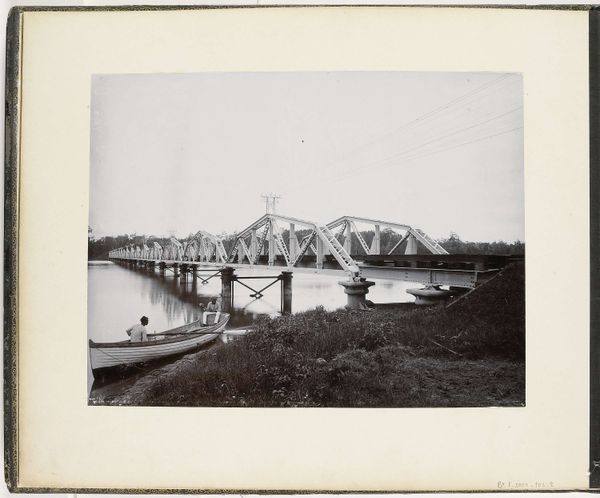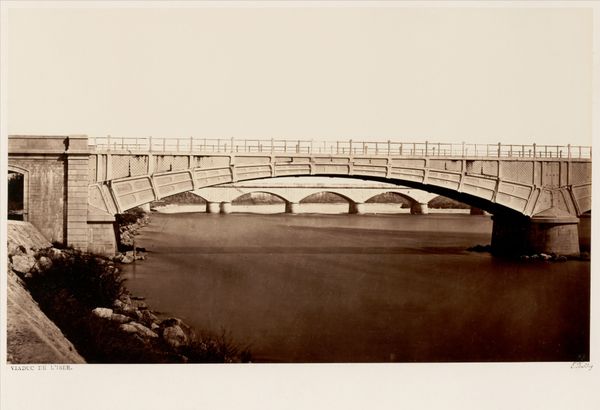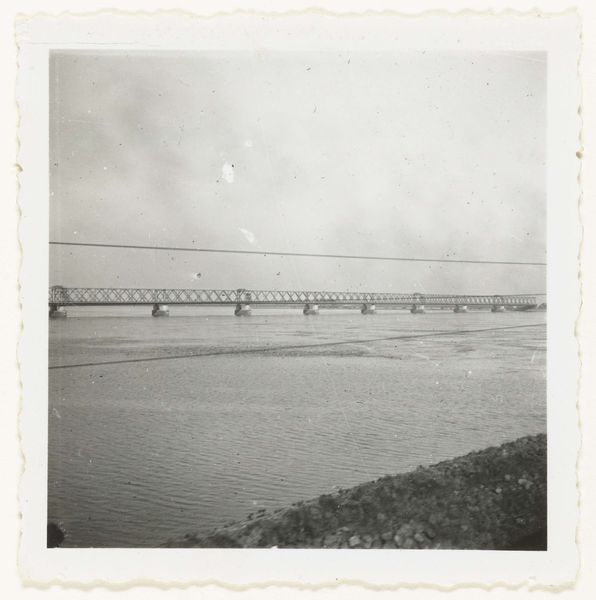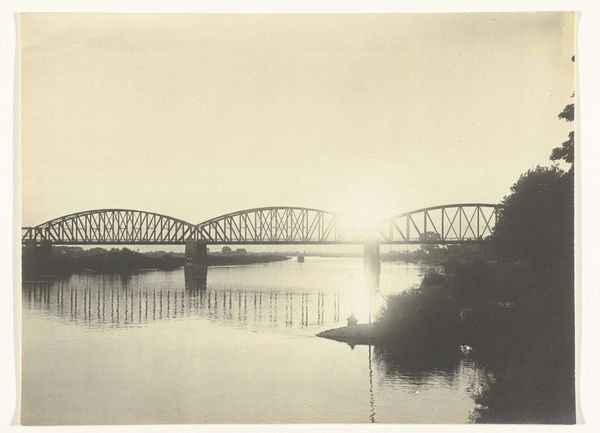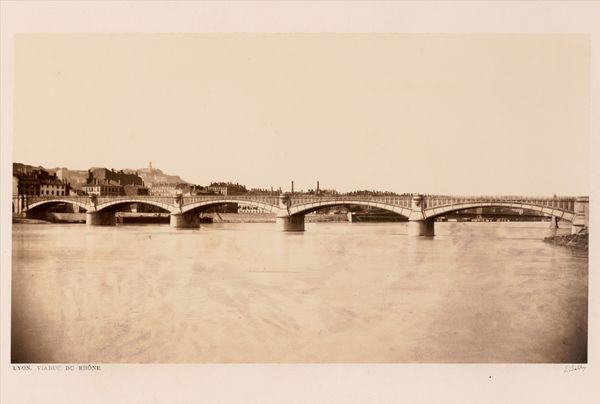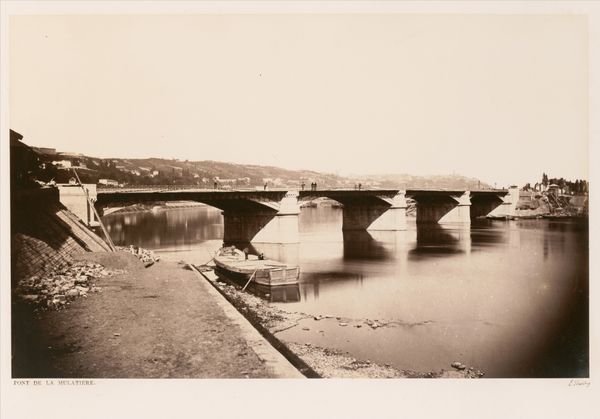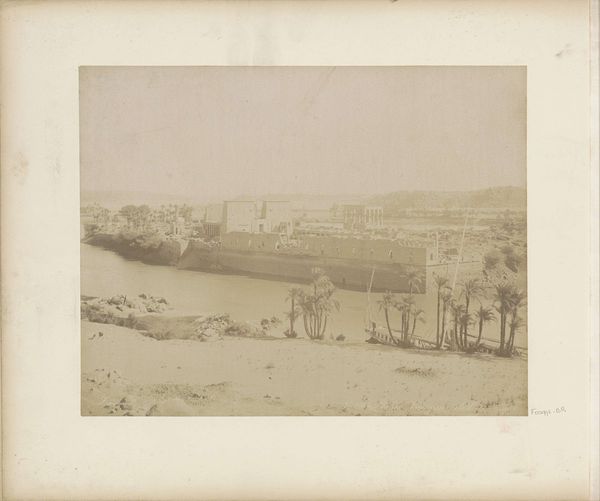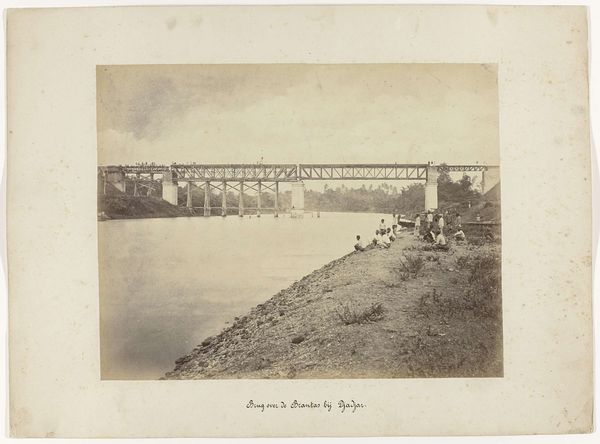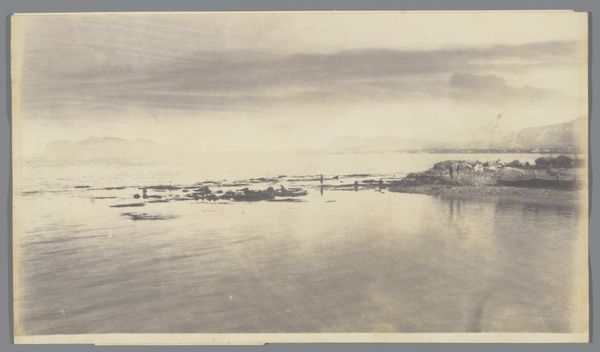
photography, albumen-print
#
16_19th-century
#
landscape
#
river
#
photography
#
cityscape
#
albumen-print
#
realism
Dimensions: Image: 25.4 x 42.5 cm (10 x 16 3/4 in.) Mount: 46 x 60.5 cm (18 1/8 x 23 13/16 in.)
Copyright: Public Domain
Edouard Baldus made this photograph of the Viaduc de la Voulte using the Calotype process. This early photographic technique involved coating paper with silver iodide, exposing it in a camera, and then developing it to create a negative. The Calotype's paper-based negative gives the image a soft, slightly fuzzy quality, different from the sharp detail we associate with later photography. Look at the bridge itself, with its rhythmic series of arches, and the way the light plays across the water. The process of making a Calotype was laborious, requiring careful preparation of the paper and precise timing in exposure and development. Baldus was commissioned to document the modernization of France under Napoleon III, so this photo isn’t just a pretty picture; it's a record of industrial progress and the changing landscape. The bridge, made of iron and stone, represents the advancements in engineering and construction that were transforming society. It speaks to broader issues of labor, politics, and consumption during this period. Considering materials, making, and context helps us to see the photograph as more than just an image; it’s a cultural artifact.
Comments
No comments
Be the first to comment and join the conversation on the ultimate creative platform.
